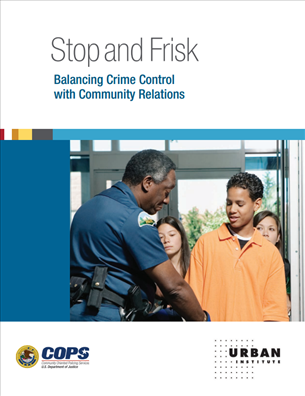Stop and Frisk Balancing Crime Control with Community Relations
Police have been stopping, questioning, and frisking pedestrians for decades in an effort to protect themselves and the public from harm. However, pedestrians may view the stop and frisk experience as unjustified and perceive that they are subject to unfair and overly aggressive treatment. These feelings are most pronounced for those residing in high-crime areas that are targets for intensive stop and frisk activities. Because citizens' views of the police contribute to their willingness to cooperate with and empower law enforcement, minimizing the negative effects of stop and frisk is crucial for overall police effectiveness and is especially important for improving relations with communities of color. This publication discusses the constitutionality and legal precedents of stop and frisk and the theory and practice behind these street stops. This background is followed by a discussion of stop and frisk's unintended consequences and a series of practical recommendations for the lawful and respectful use of pedestrian stops in the context of community policing.
Author: Nancy G. La Vigne, Pamela Lachman, Shebani Rao, and Andrea Matthews
Federal Sponsor Agency: COPS
Provider: Urban Institute
Publication Date: 2014
